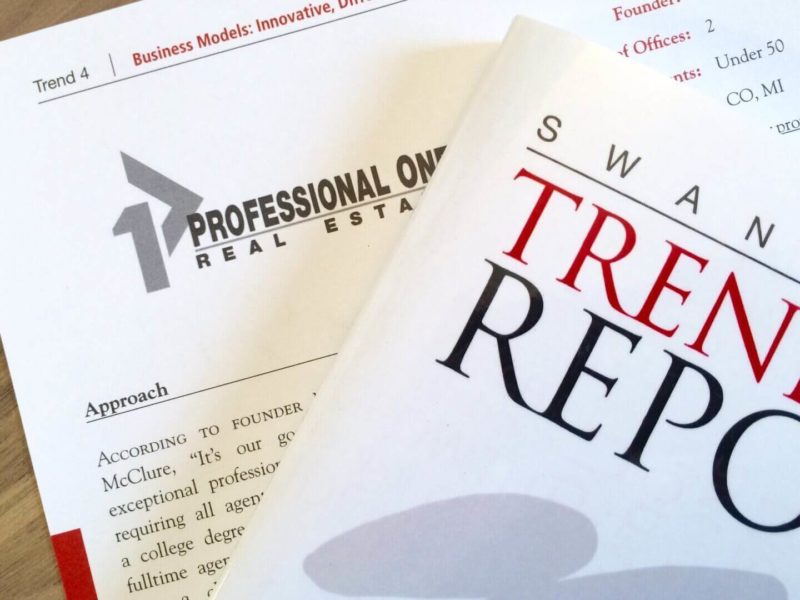#RTB | Real Estate Liposuction
NOTE – This post was written by Marc Davison of 1000Watt Consulting and published in August of 2005. It was re-published with permission.
PREFACE – This post includes many great suggestions and common-sense, “Business 101″ financial recommendations that are still as relevant in April of 2010 as it did when it was originally published nearly five years ago. I can’t imagine how many real estate brokerages might still be in existence today if they had only heeded Davison’s advice back before the crash (the crash which he also predicted correctly). Within literally 1/2 of a mile of where I am writhing this, there are five real estates offices – FIVE! – that have closed their doors within the last 18 months. Four of those offices were the traditional big-box, high overhead operations which would have undoubtedly benefited from Davison’s vision of the future, and the fifth was a low cost/fee-for-service/no value proposition shop that I’m not sure lasted even six months. I felt this post was worth re-publishing because it post packs so much “wisdom-per-square-inch.” I hope you get as much out of it as I did…and still do.
Real Estate Liposuction
Oh, the real estate bubble … from the front pages of the New York Times to Inman’s daily coverage, the talk is dizzying.
While the status of a purported bubble flips daily, the more interesting material is the “what to do in case of a burst” advice for brokers that drip out of these articles like canned fruit filling – syrupy and full of artificial ingredients. Shouldn’t the real story be about what brokers can do to improve their bottom line now, at the tail end of this 13-year, gravity-defying boom? Not only would it be more uplifting, but damn it, it’s more important! As any savvy businessperson knows, if you wait until a slowdown to fix your problems it’s too late.
Consider: a) How little it matters if the bubble bursts – good businesspeople shine in any market; b) That if it bursts, it might be the best thing that could happen; and c) Don’t wait for a cataclysm to fix things – do it now while business is still good.
Looking through the post-bubble-burst glass window
Imagine if, by virtue of a bubble burst, those whose business relies solely on their use of dogs in advertising, posing with cell phones to their ears and their incessant “capturing” and “dripping” on consumers, were to vanish from the industry. Imagine a phoenix of professional Realtors rising from the ashes during this downturn, skilled in the art of smart marketing, great customer service and prudent business planning. Like the great land rush of the 19th century, the real estate business has seen its membership explode with people looking to cash in. A few months of online education, a quickie test and a license ensues. The unskilled join brokerages and bleed its resources.
Nevertheless, business is still good isn’t it? Broker operations gross more money now than ever. Yet the net is lower than ever. Expenses drip like oil from a British sports car. And all brokers keep reading are “solutions” offered by lightweights who think franchising is still cutting edge. Who thinks cutting your advertising budget in a slowing market is a smart solution? Give me a break.
Just because it worked 30 years ago doesn’t mean squat
Real estate is not the terrestrial industry it once was. Web traffic has replaced walk-in traffic. Alternative models advertise more services for less commission. Your competition now comes from outside your sphere. Empowered consumers. Dot-com interlopers. National franchises with executive teams made up of Ivy League graduates. Progressive thinkers. If a consumer hears an agent today utter the words, “Oh, I’m sorry, I’m computer illiterate,” they recoil in shock. Followed by confusion. Then pity.
To win in business, you must be progressive. You must try new things and not rely only on the same precautions and defensive measures of days past. At a recent event I attended, the speaker asked us to look around the room and focus on everything blue. We were then asked to close our eyes and one by one recite anything in the room that was yellow. Most could not. Proving that we see only what we want or are told to see … proving how much we limit ourselves.
From what I read lately, most real estate brokers see blue. Despite the fact that the riches of real opportunity — the “not-being-caught-with-your pants-down” play — clearly lies in the rainbow of alternative/progressive thinking. In real estate, right now, when times are good, you need to see the full spectrum.
What’s outside the blue?
Paper: So, it’s innocent at $3.89 a ream at Staples. But paper is the linchpin in a cost structure that includes copy and fax machines, printers, ink, toner, files, folders, file cabinets, storage space, stamps, overnight packages, couriers and the time to process it. Look at your books. How much of your bottom line is being wasted by this archaic office supply and its cohorts. Remove paper and you remove the cost that never stops costing you.
Time: A typical 40-hour transaction on a $500,000 home yields an agent $212 an hour after typical splits and broker fees. Agent A lists a home in Greenfield, Calif., and drives 65 miles back to the Carmel office instead of farming the rest of Greenfield. Why? To spend hours manually processing paperwork. Creating folders. Making copies. Faxing docs. Remove paper and increase your hourly wage. Skim 10 hours off the transaction and realize huge savings across the board.
Square Footage: Here’s a chunk of fat sitting on the rear end of the brokerage model. A typical 5,000-square-foot facility offering 100 square feet per agent houses 40 agents. At $2.50 per square foot, brokers spend $250 per month per agent. Multiply that by 40 agents, by 12 months per year. That’s over $100,000. How many offices do you have? Can anyone say liposuction? Look around your facility. How often are all those desks empty? Eighty percent of the time? Ninety percent? Couldn’t one desk be used by four agents? Yes it can. Pencil that out.
Retail Locations: Why are brokerages today located on Main Street paying top retail dollar? Research show that the majority of consumers are shopping online for homes, not in strip malls. What compelling reasons exist to support these locations? Walk-in traffic? What walk-in traffic? People don’t walk Main Street America anymore. They drive through it. Or at best run through it performing as many errands as their 30-minute parking meter allows. Unless you start retailing items like company branded mops, buckets, paint materials, floor cleaners, cameras or espresso, what’s the point?
Relocation: Move the bulk of the operation to cheaper industrial office space. Or at the very least, reduce the retail space. 1,000 square feet. House one agent who can double as a barista. Convert the back into a professional conference room equipped with a plasma screen and a wireless Web connection. The savings would allow you to maintain your advertising budget in a downturn, thus pummeling your competitors who are still smoking the “cut marketing in a downturn” hash that conventional thinkers are constantly peddling.
Your Agents: Spinning their wheels. Burning gas. Driving around getting handwritten signatures on paper that they have to copy, fax, file and process for your review the same way your real estate grandmother did in 1950. It’s 2005. Paperless solutions are here now. Can you even try to calculate how much money your traditional process costs you? I have. It’s sickening.
Mobility: Mobility isn’t driving 25,000 miles a year outfitted with 10-pound laptops you can’t write on, PDAs, cell phones, cameras, portable printers, scanners, transaction coordinators and a microwave oven housed in your handbag so you can hot-sync Hot Pockets all day long to keep yourself nourished. Mobility is being able to work anywhere, anytime. With one machine (a Tablet PC) you can process transactions digitally without ever having to touch paper. Ever!
Going Paperless: In 1996 Inman News published its first story on the paperless transaction. It was a pipedream. Today digital signatures are legal. San Francisco Bay Area broker John Pinto processed 290 transactions in 2004 without a sheet of paper. He shaved half a day off of his workweek. John didn’t wait for business to slow to fix his problems. He fixed it while the money’s hot.
Who knows when the bubble is going to burst? The prudent businessperson says, “Who cares.” They don’t sit around worrying about the future. They seize the present. They create their future rather than wait for it to manipulate them. They see all things that aren’t blue.







